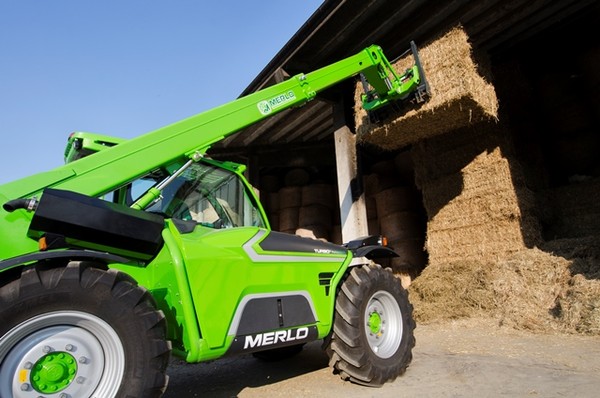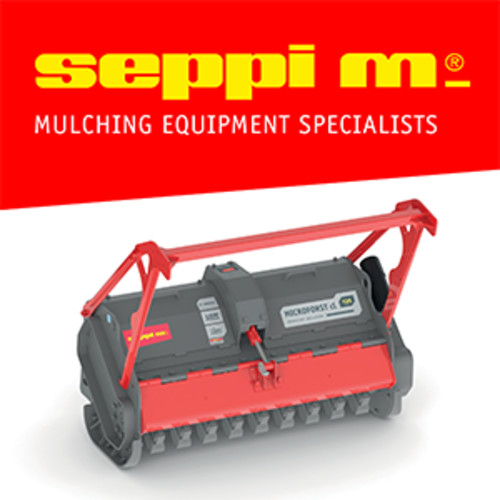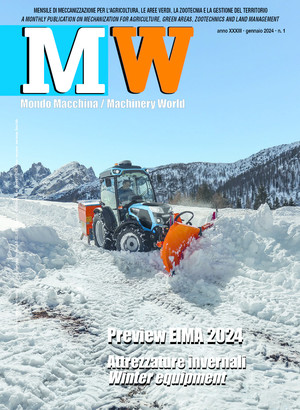
Telehandlers: Rivals to the Tractor?
Telescopic lifts once simply moved packaged and loose material around the farm, but now they have evolved in response to new needs and, according to some, could become a future rival for the tractor
Farms do many more things than they used to, and that means they need the machines to do them. Especially at the hub of the farm, materials and things have to be handled, and this is all the more important when, for example, the farm uses vegetable biomass to fuel a biogas plant. On the other hand, as a result of the long crisis in the construction industry, construction machinery makers have also been looking for ways of using their products in farming, where there is a certain crossover of functions. Examples are loaders and backhoe loaders. But the most success among farmers has been won by the telescopic lift, also known as the telescopic loader or telehandler. This is probably due to its versatility of use, even if the manufacturers have also added on typical tractor functions, while maintaining the original functions intact.
Recently, however, a closely fought contest has been going on between medium-power and medium-size tractors with a front loader capable of pursuing many functions and the telescopic lift which, while still shifting loads with its traditional arm, can also be used with profit to tow, manage tools through a three-point hitch and hydraulics, and power an ample range of equipment. In any case, practically all leading tractor makers now have their own line in telehandlers, solving the contest at its roots, to the advantage of farmers who can choose the machine most adapted to their needs.
The main function
Telescopic lifts were certainly invented to move loads, and they are better at doing this than tractors with a front-mounted lift, even if the gap between the two has been reduced significantly in the recent past. Lifting is so important that virtually all telehandler models come with serial numbers, part of which indicates their basic lifting performance: maximum load (often in quintals, i.e.,. units of 1,000 kg no longer used officially) and maximum lifting height (in meters). Of the models available on the market, those most popular among farmers are in the low and medium range, with maximum loads from 3-5,000 kg and a maximum height of 6-10 meters.
The turning-point for these devices came with active load control and automatic operating tool recognition by the device itself. These two factors led to a significant increase in safety. Merlo, for example, developed its Dynamic Load Control which is effective when the machine is moving or at rest. The system involves a central unit which automatically controls the load’s weight, the hitch and the angle of inclination of a connected terminal tool (if a Merlo original), visualising the related values on an ample dedicated display with an indicator using traffic light logic in which the level of operating safety is shown continuously on the load diagram. Once the device has gone beyond the critical point, the movement in question is halted automatically, and the only possibility is for the lifting arm to be retracted. Especially if the loader is working rapidly and fluidly, productivity is enhanced.
One way in which telehandlers are superior to tractors is certainly their ease of handling in small spaces. Given the same overall dimensions, telehandlers can always out-manoeuvre tractors when the space is limited. Telehandlers can have two or four wheel steering and can also step sideways, giving a clear advantage when sizeable loads have to be placed at significant heights.
Devices for Farmers
The agricultural devices designed for use with a telehandler are undoubtedly the most interesting novelties. One early attempt of a few years back was to fit a standardised hydraulic power take-out, but the efficiency was low. The solution was to fit a traditional mechanical PTO with performance running at 90-92%, in line with many tractors.
Fitting an agricultural style towing hitch was probably the simplest and most immediate step and, considering that a typical configuration gives equal-diameter wheels and almost uniform distribution of weight, even heavy transport tasks can be carried out efficiently and as well as with a tractor. Nor is there any compromise over speeds since all recent telehandlers can travel at up to 40 km/h, with of course allowance for when the limit is raised to 50 km/h.
The biggest difference in favour of tractors remains the continuing use of hydraulic power in telehandlers, giving lower performance than with traditional mechanical systems. But in this case too more advanced solutions have improved the situation significantly, with some encouraging exceptions. New Holland’s new LM range of telescopic handlers boast a 6x3 semi-automatic Powershift. Low manually selected gears are useful in and around the farm buildings, while two top gears are managed automatically, by inserting the transmission ratio most advantageous in terms of operating consumption and comfort.
There is no problem with giving telehandlers a hydraulic lift and outputs. The plant installed is more than sufficient and has evolved to fit their role – an example, is Massey Ferguson’s MF 9000 Xtra series with four models from 100-122 HP. This offers a 190 litre per minute hydraulic system with Los sensor managed by proportional logic joystick so that all functions can work at the same time without compromising performance.
Driving Seat and Visibility
This is a case in which the tractor has an advantage. The lifting arm on the telehandler means that the cab can’t be quite so wide, even if a width of over a metre is still possible. Telehandler comfort has, however, made big advances with the installation of suspension, a joystick in most cases and an ample display, while the cab has air conditioning and pressurisation. But telehandlers find another big plus in terms of front, rear, lateral and upward visibility. The configuration enables a much better direct visual control of the loads than with a classical front lift on a tractor.
On more recent models, the arrangement of the various parts of telehandlers has also been rationalised so as to optimise vision at ground level, a big help when picking up or collecting loose or packed material.








